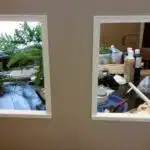Building a DIY floating bed frame is not only an excellent way to showcase your creativity and woodworking skills, but it also provides a unique and stylish addition to your bedroom. This type of bed frame creates the illusion that the bed is floating above the ground, and it can be customized to fit any size or style preference.
To begin building a DIY floating bed frame, you will need a few essential tools and materials, including wood planks, screws, brackets, and a drill. With some patience and attention to detail, you can create a beautiful floating bed frame that will impress your friends and family. In this article, we will provide step-by-step instructions on how to build your own DIY floating bed frame and offer tips on how to customize it to fit your personal style. So let’s get started!
Tools You’ll Need
Imagine building a floating bed frame as if you were a chef preparing a meal. Just as a chef needs the right ingredients to create a delicious dish, you’ll need the right tools to build a sturdy and safe bed frame. Tool safety is key, and it’s essential to invest in quality tools that can withstand the pressure of your project.
Budget considerations should also be taken into account when selecting your tools. While it may be tempting to purchase cheaper alternatives, investing in high-quality tools will save you time and money in the long run. Keep in mind that DIY projects require careful planning and execution, especially when building furniture items such as bed frames.
When deciding between DIY vs professional installation, consider whether you have the skills and experience necessary for this project. Building a floating bed frame requires attention to detail and precision, which can be challenging for those who are new to DIY projects. Additionally, take into account your project timeline- if you’re on a tight schedule or don’t have much free time, professional installation may be the better option for you.
To move onto the next section about materials you’ll need, let’s first ensure that we’ve covered all bases with tool selection for this project.
Materials You’ll Need
Now that you have gathered all the necessary tools, it’s time to move on to the next essential part of building a DIY floating bed frame: selecting the right materials. The first consideration when choosing materials is your budget. If you’re looking for budget options, consider using plywood or MDF board for the base and framing. These materials are affordable and readily available at any hardware store.
However, if you’re looking for more sustainable alternatives, there are several eco-friendly options that you can choose from. Reclaimed wood is an excellent choice as it is not only environmentally friendly but also adds character and texture to your bed frame. Bamboo is another option that is both sustainable and durable. It grows fast and has a lower environmental impact than traditional hardwoods.
When selecting the right material for your DIY floating bed frame, it’s important to consider both your budget and environmental impact. While plywood and MDF board are affordable options, they may not be the most sustainable materials available. On the other hand, reclaimed wood and bamboo are eco-friendly choices that can add unique character to your project. In the next section, we’ll discuss how to choose the right type of wood for your bed frame based on its strength and durability.
Choosing The Right Wood
Imagine you are a carpenter who wants to build a house. You have the blueprint, the plan, and the skillset. However, you lack one crucial element – the right wood. Without it, your house will not only be unstable but also won’t last long. Similarly, when building a floating bed frame, choosing the right wood is essential for its durability and functionality.
The best options for building a DIY floating bed frame are usually hardwoods such as oak, maple, cherry or walnut. These types of wood are known for their strength, stability and durability which makes them perfect for supporting the weight of a bed frame. Softwoods such as pine or spruce can also be used if treated correctly with sealers and stains to prevent warping or rotting.
Cost considerations are also important when choosing the right wood for your floating bed frame project. Hardwoods tend to be more expensive than softwoods due to their higher quality and strength. However, using softwoods may require more maintenance over time which could ultimately cost more in terms of time and money.
When selecting your wood, consider what you want to achieve with your project as well as your budget restrictions. The quality of your finished product will depend on the type of wood you choose so take time in making this decision before proceeding to measuring and cutting the wood needed for your DIY floating bed frame project.
Measuring And Cutting The Wood
- Accurately measuring the wood is essential for the successful assembly of a diy floating bed frame.
- The measurements must take into account the size of the mattress, the desired height of the bed frame, and any other components that will be incorporated into the frame.
- Cutting the wood should be done using the appropriate saw for the type of wood being used, ensuring that all cuts are straight and accurate.
- Precautions must be taken when cutting the wood to avoid any injuries from flying particles or sharp saw blades.
Measuring The Wood
Before you begin building your DIY floating bed frame, it’s important to select the right type of wood for your project. You’ll want to choose a sturdy and durable option that can withstand the weight of the mattress and any additional bedding. Popular choices include oak, maple, and birch.
Once you have selected your wood, it’s time to start measuring accurately. This is an essential step in ensuring that your bed frame is properly aligned and sturdy. Use a tape measure or ruler to measure each piece of wood carefully, double-checking your measurements before making any cuts.
Inaccurate measurements can lead to uneven boards, unstable joints, and ultimately a poorly constructed bed frame. Take your time during this step to ensure that everything is square and level before proceeding with the next steps of cutting and assembling the pieces together. By taking these precautions, you’ll be well on your way to creating a beautiful and functional DIY floating bed frame that will last for years to come.
Cutting The Wood
After carefully measuring the wood, the next step in building a DIY floating bed frame is cutting the pieces to size. This requires proper woodworking techniques and tools, such as a circular saw or a table saw. It’s important to use caution when cutting the wood, ensuring that your fingers and other body parts are safely out of harm’s way.
Before making any cuts, it’s crucial to double-check your measurements to ensure accuracy. Once you’re confident in your measurements, begin by making straight cuts along each piece of wood. Take care to make precise cuts at the correct angles and lengths needed for each piece of the bed frame. Remember that even small inaccuracies can add up and affect the overall stability of the finished product.
As you cut each piece of wood, label it with its corresponding location on the bed frame using masking tape or another marking tool. This will help keep everything organized during assembly and prevent confusion later on. With precision cutting and labeling, you’ll be one step closer to creating a beautiful and functional DIY furniture design that is both sturdy and stylish.
Sanding And Smoothing The Wood
After measuring and cutting the wood, the next step in building a DIY floating bed frame is to sand and smooth the wood. This is an important step in ensuring that your bed frame looks professional and polished. Woodworking techniques such as sanding and smoothing are essential for creating furniture that not only looks great but also lasts longer.
When it comes to sanding and smoothing, there are a few key things to keep in mind. First, make sure you have the right tools for the job. A power sander or sandpaper will work well for most projects. Second, start with a coarse grit sandpaper and work your way up to a finer grit. This will help you remove any rough spots or imperfections in the wood while also creating a smooth finish.
In terms of DIY furniture trends, many people are opting for natural wood finishes these days. If this is something that interests you, then be sure to choose a high-quality wood that will look great when sanded and smoothed. With proper woodworking techniques like sanding and smoothing, you can create a beautiful piece of furniture that will last for years to come.
Assembling the base frame is the next step in building your DIY floating bed frame. To do this, you’ll need to attach four pieces of wood together using screws or nails. Be sure to use clamps to hold everything in place while you work. Once you’ve assembled the base frame, it’s time to move on to attaching the headboard and footboard.
Assembling The Base Frame
To assemble the base frame of your DIY floating bed, you will need to gather the necessary materials and tools. These include pieces of lumber, screws, a drill, a saw, a measuring tape, and a pencil. Begin by laying out the lumber according to the dimensions of your bed frame. Cut each piece to size using your saw and mark them with your pencil for easy identification.
Next, assemble the base frame by attaching the lumber using screws and your drill. Start with the longer sides of the frame and then attach the shorter ends. Be sure to measure as you go along to ensure that everything is even and level. Once all sides are attached, reinforce the corners with additional screws for extra stability.
Decorating options for your DIY floating bed frame are endless. You can choose various finishes such as stain or paint depending on your preference. Additionally, adding headboard brackets can be an alternative design option if you would like to add a headboard later on down the road. With these options in mind, you can customize your bed frame to fit any style or décor in your home.
Transitioning into attaching brackets is simple once you have completed assembling the base frame of your DIY floating bed. The next step involves securing brackets onto both ends of each long side beam in preparation for mounting onto wall studs. By following these instructions carefully and taking time during assembly, you will soon have a sturdy and stylish floating bed that will serve as an excellent addition to any room!
Attaching The Brackets
After assembling the base frame of your DIY floating bed, you’re ready to move on to the next step: securing brackets. Brackets are what will hold up your bed platform and give it the floating effect. You’ll need four brackets, one for each corner of the bed.
To secure the brackets, measure and mark where you want them to be placed on each corner of the base frame. Make sure they’re level and evenly spaced apart. Once you’ve done that, drill pilot holes through both the bracket and base frame. Then, use screws to attach the bracket securely to the frame. Repeat this process for all four corners.
Once your brackets are attached, adjust their height as needed so that they’re level with each other. This is important for creating a balanced and stable floating effect. One way to do this is by using shims or blocks of wood to adjust the height of each bracket until they’re even with each other. Once you’ve got all four brackets adjusted correctly, you can move on to creating the floating effect in the next section.
In order to create the floating effect for your DIY bed frame, you’ll need to follow a few more steps. However, before we dive into that, make sure your brackets are secured properly and at an even height with one another. This will ensure that your bed is sturdy enough to support weight without tipping over or wobbling excessively. With that done, let’s move onto how we can make our DIY bed appear as if it’s floating above ground!
Creating The Floating Effect
Now that we have prepared the wooden platform for our DIY floating bed frame, let’s move on to the next step of creating the illusion of a floating bed. This effect is achieved by installing LED strip lighting around the perimeter of the platform. This will create a warm glow and give your bedroom an elegant touch. Adding this type of lighting can also help promote relaxation and improve your sleep quality.
To enhance the floating effect even further, you can incorporate some creative decoration ideas. One popular option is to add a sheer canopy or curtains around the bed frame. This will create a cozy and intimate atmosphere in your bedroom while maintaining the illusion of a floating bed. You can also add decorative pillows and throws to complement your bedding and complete the look.
By now, you should have successfully created a stunning DIY floating bed frame that will be sure to impress anyone who sees it. However, before adding your mattress, it is important to ensure that there is enough support for both the weight of the mattress and any additional weight that may be added when using the bed. In our next section, we will discuss how to add support to ensure that your DIY floating bed frame is sturdy and safe for use.
Adding Support
To add support to your DIY floating bed frame, you will need to make sure that the structure is properly reinforced. This step is crucial in ensuring that your bed can handle the weight of you and your mattress. Reinforcing the structure also ensures that your bed frame stays stable and doesn’t sway or wobble.
One way to reinforce the structure of your floating bed frame is by adding additional support beams. These beams should be placed perpendicular to the existing support beams and secured with screws or bolts. Adjusting height can also help improve the stability of your bed frame. If you have a particularly high mattress, you may need to adjust the height of the support beams accordingly.
Another option for reinforcing your floating bed frame is by using metal brackets or corner braces. These pieces can be attached to both the headboard and footboard, as well as any additional support beams. The brackets or braces help distribute weight evenly across the entire structure, further improving stability.
By taking these steps to reinforce your DIY floating bed frame, you’ll ensure that it can handle years of use without any issues. Once you’ve completed this step, you’ll be ready to move on to upholstering the bed for a finished look and comfortable sleeping surface.
Upholstering The Bed
Upholstering the Bed:
After building the frame for your floating bed, it’s time to move on to upholstery. Before starting, consider your upholstery options carefully as they will impact both the look and feel of your bed. One option is a simple upholstered headboard, which can be made by attaching foam to plywood and covering it with fabric. Another option is to fully upholster the entire frame with fabric or leather. This will require more materials and skill, but can result in a more luxurious look.
Once you’ve decided on your upholstery option, it’s time to choose bedding choices that compliment it. Consider factors like color and texture when selecting sheets, comforters, and pillows. For example, if you chose a leather upholstered bed frame, you may want to opt for crisp white sheets and fluffy down pillows for contrast.
When upholstering your bed frame or headboard, take your time and use quality materials. Make sure to measure twice before cutting any fabric or foam to ensure a proper fit. Use high-quality staples or screws to attach the fabric securely to the frame.
Moving on from upholstery, the next step in building your floating bed is painting or staining the frame. This will give it a finished look that matches your personal style and decor preferences. Keep reading for tips on how to achieve a professional-looking finish that will last for years to come.
Painting Or Staining The Frame
Once the floating bed frame has been assembled, it is time to decide whether to paint or stain the frame. Both options have their advantages and disadvantages, so it really comes down to personal preference. One advantage of painting the frame is that it allows for a wider range of color options. If you want your bed frame to match your existing décor, painting may be the way to go. Additionally, paint can be easier to apply evenly than stains, which can sometimes leave splotches or uneven patches.
On the other hand, staining the frame allows for more natural-looking finishes that showcase the beauty of the wood grain. Stains come in a variety of colors and shades, so it is still possible to achieve a customized look. Staining also tends to require less maintenance over time than painted frames since scratches and scuffs are less noticeable on stained surfaces.
Regardless of which option you choose, there are some general maintenance tips that should be followed. First and foremost, always use high-quality paint or stain products and follow manufacturer guidelines for application and drying times. Once applied, use a soft cloth or brush to dust off any accumulated dirt or debris regularly. Avoid using harsh cleaning chemicals as they can damage both painted and stained surfaces.
Now that the floating bed frame has been painted or stained and left ample time to dry completely, adding finishing touches will give it an extra touch of personality.
Adding Finishing Touches
Once you have finished painting or staining the frame of your DIY floating bed, it’s time to move on to the next step: adding finishing touches. The right finishing touches will not only make your bed look great but also ensure that you are comfortable when you sleep at night. Two important finishing touches to consider are choosing bedding and adding lighting.
Choosing bedding is an important part of making your DIY floating bed look and feel great. You want to choose bedding that matches the style and color scheme of your room, while also being comfortable and durable. When selecting bedding, consider factors such as thread count, material, and style. A high thread count will provide a softer feel, while materials like cotton or bamboo will be breathable and easy to clean.
Adding lighting is another important finishing touch for your DIY floating bed frame. Not only does it create ambiance in your room, but it can also provide essential light for reading or other activities in bed. Consider adding a bedside lamp or pendant light above the bed. You can even install dimmer switches so that you can adjust the brightness depending on your needs.
Now that you have completed the essential steps for building a DIY floating bed frame, it’s time to think about customization options that will make it uniquely yours. In the next section, we’ll explore some tips for customizing your bed frame to suit your personal preferences and needs.
Tips For Customizing Your Bed Frame
Customization is the key to building a bed frame that you will love for years to come. With endless possibilities, you can customize every aspect of your floating bed frame, from the materials used to the color and finish. Whether you prefer a minimalist look or something more ornate, there are customization ideas that suit any style.
Design inspiration can come from anywhere: nature, architecture, art or even fashion. In fact, some of the most unique and creative bed frames started as a simple sketch on paper. To get started with your design inspiration, try browsing through furniture catalogs or searching online for DIY projects. You can also visit local furniture stores to get an idea of what is currently trending in the world of modern and contemporary furniture.
When it comes to customizing a floating bed frame, there are four key areas to consider:
- Material selection
- Size and shape
- Color and finish
- Additional features such as built-in storage or lighting
By taking these factors into account when designing your bed frame, you can create a truly one-of-a-kind piece that reflects your personal style and meets your individual needs. So let your creativity run wild and start designing your dream floating bed frame today!
Transitioning into troubleshooting common issues: While customization is an exciting part of building a DIY floating bed frame, it’s important to keep in mind that certain issues may arise during the process. Knowing how to troubleshoot common problems can save time and frustration down the line, so stay tuned for our next section on how to address any issues that may come up during construction.
Troubleshooting Common Issues
Fixing wobbling and addressing sagging are common issues that can be encountered when building a DIY floating bed frame. If your bed frame is wobbling, the first thing to check is the stability of the support system. Ensure that the support beams are screwed securely into the wall studs or legs, depending on your design. You may also want to add extra support by installing diagonal braces or adding crossbeams to prevent any side-to-side motion.
Addressing sagging is another issue that can occur with floating bed frames, especially if they are not built with sturdy materials. If you notice any sagging in your mattress, it may be due to insufficient support from the slats or improper placement of supports. To fix this issue, try adding more slats or using thicker pieces of wood for added strength. Additionally, ensure that the supports are spaced evenly across the length of the frame to avoid placing too much weight on one area.
If you have tried these solutions and are still experiencing issues with wobbling or sagging, it may be helpful to consult with an expert in DIY furniture building. They can offer suggestions on how to troubleshoot these problems and provide guidance on how to modify your design for increased stability and comfort. With a little bit of patience and attention to detail, you can enjoy a sturdy and comfortable floating bed frame that will last for years to come.
Now that you have successfully addressed any issues with stability and comfort in your DIY floating bed frame, it’s time to start enjoying its benefits! From its elegant design to its space-saving features, a floating bed frame can transform any room into a cozy retreat. Whether you’re looking for a modern look or a traditional feel, there are endless possibilities for customizing your new bed frame according to your taste and style preferences. So why wait? Start enjoying your new floating bed frame today!
Enjoying Your New Floating Bed Frame!
Congratulations on successfully building your very own floating bed frame! Now that you have completed this exciting project, it’s time to enjoy the fruits of your labor. Not only does your new bed provide a stylish and modern look to your bedroom, but it also offers practical benefits such as maximizing space and creating a cozy ambiance.
To fully enjoy your new floating bed frame, start by adding some finishing touches to your bedroom decor. Consider adding soft lighting fixtures or candles near the bed to create a warm and inviting atmosphere. You can also add some decorative pillows or throws to enhance the coziness factor of the space.
Another way to maximize the use of space with your new bed is by incorporating storage solutions underneath it. Utilize baskets or bins that can be neatly tucked away under the frame, providing additional storage for clothing, bedding, or other items that would otherwise take up valuable closet space.
In addition to these ideas, here are four more ways you can get the most out of your new floating bed frame:
Experiment with different bedding materials – try out different fabrics and textures for sheets, comforters, and pillows to find what feels most comfortable and cozy for you.
Incorporate plants or greenery into your bedroom – not only do plants add a touch of nature to any space, but they also help purify the air in your room.
Install blackout curtains or blinds – if you’re looking for optimal sleep conditions, make sure to block out any unwanted light sources from outside.
Create a designated relaxation area – consider adding a small seating area near your bed where you can unwind at the end of each day.
By implementing these tips and tricks, you’ll be able to fully enjoy all the benefits that come with having a beautiful and functional floating bed frame in your home!
Conclusion
Building a DIY floating bed frame may seem daunting, but with the right tools and materials, it can be a fun and rewarding project to take on. The process of selecting the right wood, measuring and cutting it to size, sanding and smoothing the surface, and adding finishing touches can lead to a sense of accomplishment as you create a custom piece of furniture for your bedroom.
As you lay in your new floating bed frame, surrounded by the warmth of the wood and the feeling of weightlessness, you’ll feel like you’re sleeping on a cloud. The beauty and simplicity of this design will make your bedroom feel like a serene oasis where you can escape from the chaos of daily life. So why not take the plunge and build your own floating bed frame? With some patience and creativity, you’ll be able to create a stylish and functional addition to your home that will last for years to come.
Image Credits
- “Groove in bed frame side panel” by louento.pix (featured)





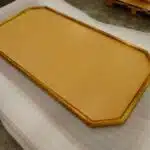




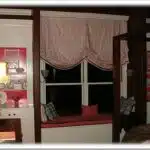

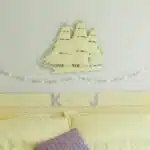



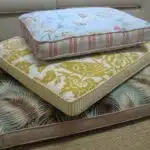

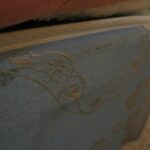





![How To Repair Rotted Wood 24 Texture : Altario Buick Estate Wagon : Rotting Faux Wood Paneling [1 of 2]](https://green-life.blog/wp-content/uploads/2023/05/z1CersK-gCjq-150x150.jpg.webp)




